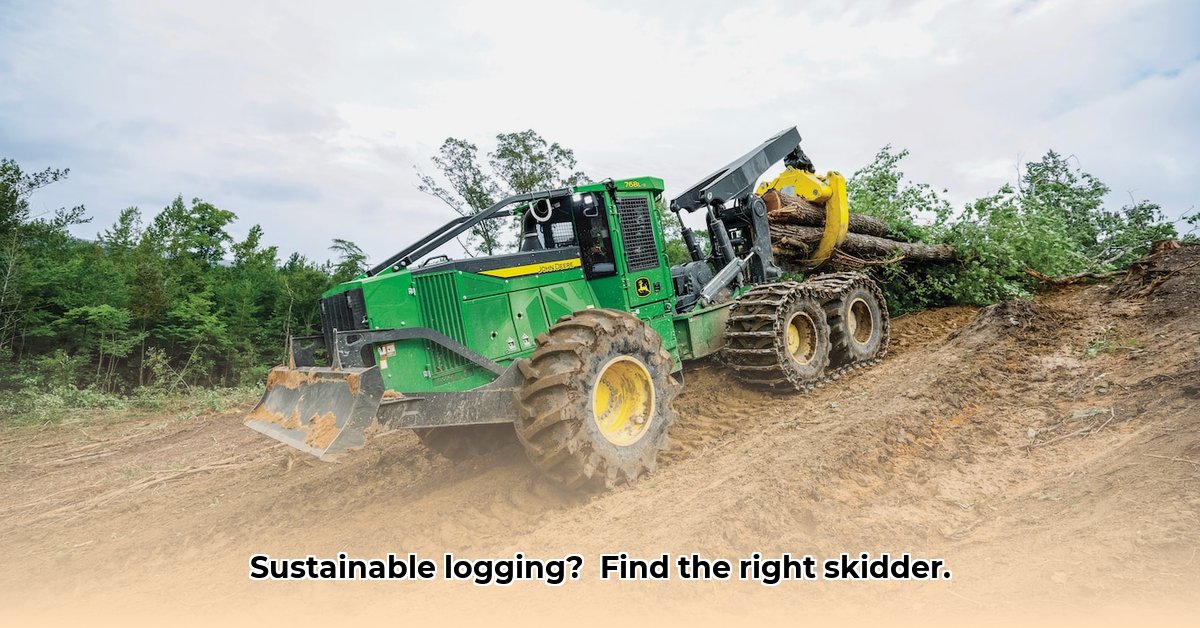
Sustainable forestry demands efficient and responsible logging practices. Choosing the right skidding winch is paramount to achieving this. This guide provides a step-by-step approach to selecting a sustainable winch, balancing performance with environmental responsibility. For tractor power recommendations, check out this helpful resource: Tractor HP Guide.
Understanding Skidding Winch Types & Specs
Several winch types exist, each with unique capabilities. Choosing the right one depends on your needs and priorities.
1. Pulling Capacity: This measures the winch's strength (kN or lbs). Higher capacity handles larger logs but consumes more fuel and costs more. What's your average log size? This directly impacts the capacity you need.
2. Power Source: Most use the tractor's hydraulic system. Ensure your tractor has sufficient engine power. Consider the operational efficiency of different power sources. What are your terrain constraints? Will hydraulic power suffice, or do you need something more robust?
3. Control Mechanisms: Manual winches are simple but less efficient. Wireless remotes improve safety and efficiency but increase cost and complexity. How important is operator safety and ease of use to your operation?
4. Grapple Types: Grapples grip the logs. Design varies impacting handling efficiency. The type of grapple best suited to your needs will depend on the size and types of logs commonly harvested in your operation.
| Winch Type | Capacity (kN) Range | Power Source | Control Type | Grapple Style | Advantages | Disadvantages |
|---|---|---|---|---|---|---|
| Manual | 10-20 | Hydraulic | Manual | Single/Double | Simple, affordable, easy maintenance | Less efficient, physically demanding |
| Hydraulic (Wireless) | 15-30 | Hydraulic | Wireless Remote | Multiple | Safer, faster, more efficient | Higher upfront cost, slightly more complex |
| Mechanical | 10-20 | Mechanical | Manual | Basic | Simpler design, potentially lower maintenance | Lower pulling power, slower operation |
Choosing the Right Winch for Your Needs
Selecting the ideal winch involves a multifaceted decision-making process.
1. Forest Type: Dense forests require maneuverable winches, while open areas allow for larger machines. How dense is your typical logging area? This will influence the maneuverability requirements for your winch.
2. Terrain: Steep hills demand powerful winches with superior braking. Flatter land offers more choices. Does your terrain present significant challenges, such as steep inclines and uneven surfaces?
3. Budget: Consider initial cost, maintenance, fuel, and potential repairs. What's your total budget for the winch and its associated operational costs?
4. Logging Volume: Higher volumes need larger capacity winches. What is your planned annual logging volume? This will help determine appropriately-sized equipment.
Sustainability Considerations
Environmental responsibility is crucial.
1. Materials: Prioritize winches made from sustainable or recycled materials. What are the environmental impact considerations of the materials used in your chosen winch?
2. Fuel Efficiency: Lower fuel consumption reduces your carbon footprint. What is the fuel efficiency rating of each winch you are considering?
3. Maintenance: Regular maintenance extends winch life, minimizing waste. How will you factor in the costs and time involved in your winch's maintenance plan?
Safety and Regulations
Safety is paramount. Comply with local regulations, provide operator training, and conduct regular equipment inspections. The lack of industry-wide standardization highlights the need for robust safety protocols. How will you ensure that your operation adheres to all relevant safety guidelines and regulations?
Maintenance and Operation
Regular lubrication, cable inspections, and prompt repairs are crucial. Following manufacturer guidelines extends lifespan and minimizes environmental impact. What is your planned maintenance schedule to ensure your winch functions optimally and safely?
Resources & Further Reading
Consult reputable manufacturers and industry associations for detailed information. Stay updated on advancements in sustainable logging technologies.